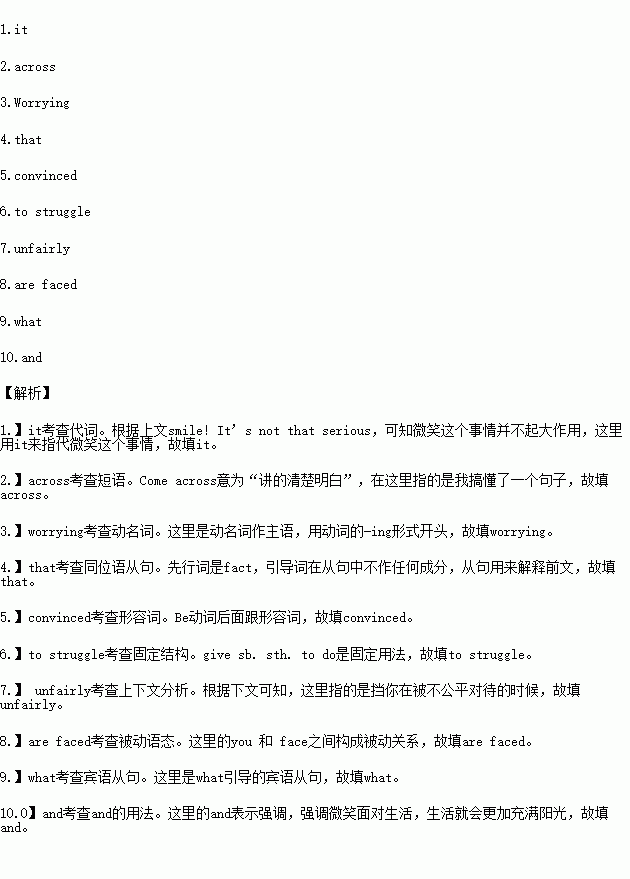题目内容
阅读下面材料,在空白处填入适当的内容(一个单词)或括号内单词的正确形式。
Recently, I failed an exam. However, after I came out of my teacher’s office, I told myself “smile! It’s not that serious.”
I smiled a big smile and 1. worked a little, really.
Everyone gets frustrated sometimes. I used to be always influenced by pressure and I was often in low spirits. But one day I came 2. a sentence in the Bible: “Do not be anxious about tomorrow, for tomorrow will be anxious for itself. Let the day’s own trouble be sufficient for the day.” It suddenly struck me that 3. (worry) about a problem doesn’t help. Why not just give a big smile and face up to the trouble?
Now every time I want to cry, I remind myself of the fact 4. laughter is better than tears and anger. I am 5. (convince) that there’s something magical about a smile. A smile helps me recover confidence and gives me the courage 6. (struggle) on.
So remember, whenever you’re 7. (fair) treated and whenever you 8. (face) with a setback (挫折), 9. it takes is determination to cheer yourself up again. Smile at life, 10. it will shine on you.


 ),并在其下面写出该加的词。
),并在其下面写出该加的词。